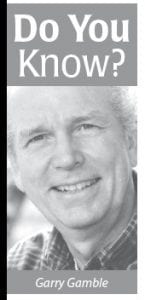Did you know Thomas Jefferson’s real passion was natural history? Little known as a naturalist and amateur biologist, at least during his lifetime (1743-1826), Jefferson disputed the great French naturalist Buffon – considered the world’s leading zoologist at the time – who claimed when an animal species was found in both the Old and New Worlds, the latter form was smaller and inferior. This didn’t exactly set well with Jefferson who took strong exception to the assertion and undertook to set the record straight.
Jefferson wisely (or fortuitously) chose the North American moose with which to make a counter argument, and proceeded to gather information and specimens of the animal and send them off on a four-month voyage to Paris; to be expected, coming from a man who 17 years later, during his presidency, had the bones of a mastodon sent to him at the White House so he could lay them out in what is now known as the East Room in an attempt to build a skeleton.
Buffon concluded, upon examination: “I should have consulted you, sir, before publishing my natural history, and then I should have been sure of my facts.”
That’s a good place to begin our look at the enigmatic moose as it underscores the importance of separating fact from perception or assumption; reality from theorem – something we may be inclined to generally accept as true without any substantive proof.
As I age, I find truth is best arrived at through a combination of historical perspective, lived experience and all-inclusive facts, validated through sound research.
Okay, so much for laying a foundation on which to frame our subject …
Paul Dudley, who certainly hadn’t aged much when he graduated from Harvard at the age of 15 – back in the 1700s – became a member of the Royal Society (London), to whom he contributed several noteworthy papers on the natural history of his home state New England. The grandson of one of the colony’s founders, Paul considered the moose “one of the Noblest Creatures of the Forest.”
Two centuries later (1929) Ernest Thompson Seton, one of the original pioneers of the Boy Scouts of America, calculated the size of the continental moose population before 1900 to be “around 1,000,000.”
Randolph L. Peterson, a Canadian mammalogist, estimated the population of moose in North America at 341,700 moose in 1948 (a number biologists considered to be too low); Kelsey (1987) placed it at 888,000 in 1985; and Gill’s 1990 estimate pushed the moose population in North America back up to 1,000,000. Researchers consider these estimates to be reasonable as they were consistent with estimates compiled by the various provinces and states where moose existed.
While moose can be found in the boreal forest region stretching from Newfoundland to Alaska, according to Patrick D. Karns, a former wildlife biologist who worked out of the Ely area for the Minnesota Department of Natural Resources: “Although the moose have been present on the North American continent for thousands of years… only within the last century and a half or so have they… established themselves north of Lake Superior.”
So, what have we learned in the last hundred-plus years about our backyard – or front yard – neighbors?
We’ll tackle habitat, among other things, in next week’s column.
Grab your Muk … ah … rather your “Moose- Luks” and get ready to head into the boreal bush.
Former Cook County Commissioner Garry Gamble is writing this ongoing column about the various ways government works.



Loading Comments